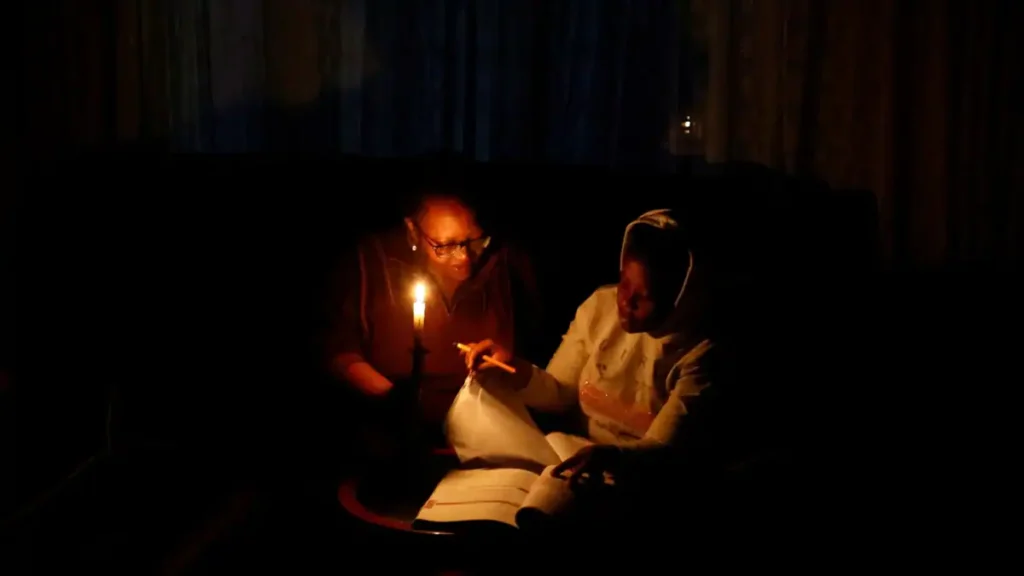According to the World Bank Group, Sub-Saharan Africa is in the midst of a power crisis marked by insufficient generating capacity, unreliable supplies, high prices, and low rates of popular access to the electricity grid. The region’s capacity for generating power is lower than that of any other world region, and growth in that capacity has stagnated.
A friend of mine said if the current power situation continues in the direction, it is going, soon enough, he will take his family on a trip just to see ‘electricity’. This is a joke not too far from the truth. Southern Africa stands at the precipice of a major electricity crisis.
The energy crisis, most notably manifesting in the form of successive rounds of load-shedding, is an ongoing period of widespread national-level rolling blackouts as electricity supply falls behind electricity demand, threatening to destabilize the national power grid.
South Africa’s state power utility, Eskom, implemented its highest level of nationwide power cuts to reduce pressure on the grid after two more of its aging power plants broke down, this is according to an article by VOA News published September 19, 2022.
The evil has also gone beyond South Africa’s borders. Zimbabwe’s prolonged power shortage is set to worsen after Zambezi River Authority (ZRA) ordered suspension of electricity generation at its main hydro plant because of a water shortage. The ZRA manages the Kariba Dam on behalf of the Zimbabwean and Zambian governments.
The authority told the Zimbabwe Power Company that the Kariba South hydropower station had used more than its 2022 water allocation and that the Kariba Dam’s usable storage was only 4.6 per cent full.
“The Zambezi River Authority is left with no choice but to firmly guide that … generation activities at the South Bank Power Station are wholly suspended henceforth until January 2023 when a further review of the substantive hydrological outlook at Kariba will be undertaken,” read a letter dated November 25, 2022.
According to Reuters, Zimbabwe has suffered acute power shortages for several years, as successive droughts have resulted in poor inflows into the Kariba Dam. Zimbabwe has also been experiencing intermittent power generation shortfalls due to an ageing plant at its Kariba hydropower station and the main coal-driven power generators at Hwange.
One of the greatest and most influential physicists of all time, Albert Einstein once said and I quote in verbatim, “We cannot solve our problems with the same thinking we used when we created them.”
Fixing Southern Africa’s electricity crisis is not just about generating more electricity, however. More focus is also needed on the transmission and distribution of electricity. New innovative ways are required to deal with the crisis, from redesigning electricity generation, transmission and distribution, and embracing technology along the way.
Read: Powering Africa: Congo’s Inga Dam holds continent’s electricity answer
Open up to more independent power producers
According to Clarke Energy, Independent power producers (IPPs) are non-utility generators (NUGs) that are typically not owned by the national electricity company or public utility. IPPs generate electricity for sale to the national electricity network. They can also sell power to a single third-party via customer via a power purchase agreement (PPA). IPPs may use the national electricity networks distribution system if mechanisms exist to permit this or via a private wire direct to the customer.
South Africa has a highly regulated Power Sector but it is slowly undergoing changes to enable IPP’s to operate in the market. There is still a high degree of regulation restrictions the channels to market for private IPP’s.
There are two ways to enter the power generation market in South Africa:
- using the IPP Procurement Programs being run by the Department of Energy according to the IRP
- approaching private companies directly who require reliable power supply and are highly exposed to load-shedding
Smart Grids
In a traditional energy grid, power flows from a centralized source like a power plant to points of consumption. When more power is needed, a new plant has to be built.
Traditional energy grids have worked well for decades, but climate change and energy stressors mean they need a re-think.
A smart grid is a highly distributed network of clean renewable energy deployed at the edge of the existing grid.
The smart grid integrates and manages renewable energy sources effectively using advanced technology. The smart grid requires an advanced level of computing to be deployed at the edge of the grid to manage and optimize the highly distributed intermittent loads introduced. It also requires a “total system” approach to effectively balance multiple fluctuating energy sources, consumption levels and new renewable technologies.
In 1860, electricity was first used in South Africa for the transmission of a telegram, from Simon’s Town to Cape Town, to deliver a message between merchants.
According to The Tri Continental, some of the early uses of electrification in South Africa included lighting, electricity provision for agricultural water pumping, and a variety of applications in mining and manufacturing. The efficiency provided by electrical machines was central to transforming the economic base from agriculture towards industrialisation, and subsequently urbanisation.
These uses did not change at all, however, electricity is now required to drive machines and transform the economies of Southern Africa leveraging on 4IR.
